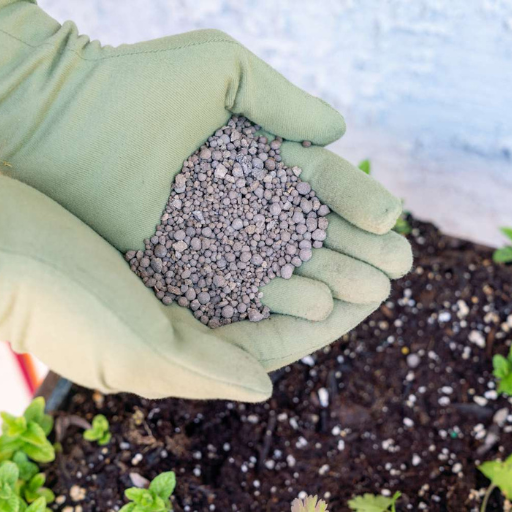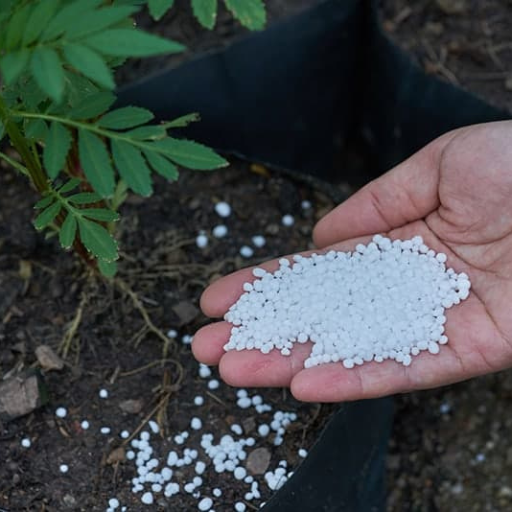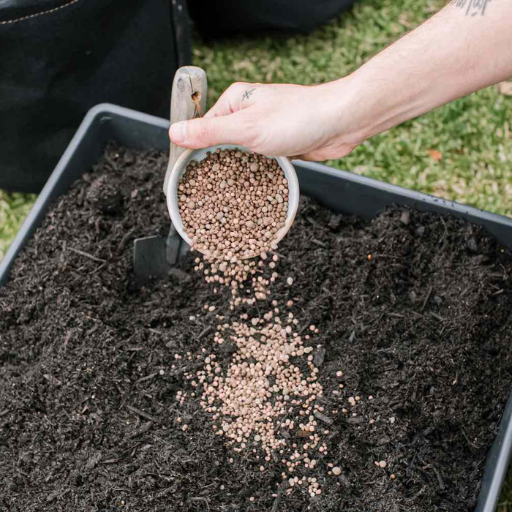Calcium is an essential nutrient that plays a crucial role in plant growth and development. It not only strengthens cell walls, enhancing overall plant structure, but also aids in various physiological processes such as nutrient uptake and enzyme function. In this blog post, we will explore the different types of fertilizers that provide calcium, examining their benefits, application methods, and how they can help improve soil health and plant productivity. Whether you are a seasoned gardener or just starting, understanding which calcium fertilizers to use can significantly enhance the vitality of your plants. Join us as we delve into the world of calcium-rich fertilizers and discover the best options available for your gardening needs.
What is Calcium Fertilizer?

Definition and Importance of Calcium Fertilizer
Calcium fertilizer encompasses any type of fertilizer or product that adds calcium to the soil for the better health of plants. Calcium is important for many plant processes and issues such as cell division, reinforcing the cell walls, and maintaining the right levels of nutrients in all parts of a plant. If the adequate amounts of calcium are maintained in the soils, problems like blossom end rot in tomatoes and other calcium deficiency disorders will be avoided, and in the end, the plants become healthier and the yields increase. Incorporating calcium fertilizers into soils will improve soil structure, enhance drainage and correct nutrient deficiencies, improving the garden’s ecosystem.
Types of Calcium Fertilizers Available
Calcium fertilizers come in many types and forms with further sub-divisions and uses.
- Calcium Carbonate: Mostly referred to as lime, this is a natural mineral that increases the soil PH and gives calcium to the plants. It takes time, but it works, and it is therefore effective in soil improvement in the long run.
- Gypsum (Calcium Sulfate): Fertilizer, which is classified under this category, helps promote the soil structure and drainage since it has calcium and sulfate. This is more so when posterior, managing clay soils prevent the soil from becoming too compacted and poorly aerated but without the risk of changing the soil the soil.
- Calcium Nitrate: This readily available Nitrogen and Calcium source forms an important base for crops that need to be fed very quickly. It is also employed in fertigation and is hence suited to soilless and protected agriculture.
When employed correctly, any of these calcium fertilizers can be particularly efficient in improving soil conditions and creating healthier plants.
Benefits of Applying Calcium Fertilizers
Calcium fertilizers have many advantages for the health of the soil and the vegetation. For one, they help to avert certain physiological disorders like blossom end rot in tomato plants or fruit cracking in peppers that generally result from calcium deficiency. In addition, the soil structure is enhanced through calcium, because it contributes to aggregation which encourages aeration and cosequently water penetration. This m,inimizes the risk of soil eros,ion and incre,ases the drought resistance. How else can calcium, in this case, reduce the uptake of a toxic element such as magnesium that occurs in some acidic soils, thus relieving plants of stress is tasty too, and enhances health to them all. Additionally, calcium in soils encourages microbial activities, as well as the availability of nutrients, and both conditions contribute to a healthy environment that is favorable to plant growth.
What are the Best Sources of Calcium in Fertilizers?
Calcium Nitrate: A Favorite Of Many
Because of its calcium and nitrogen content, calcium nitrate is preferred by gardeners and farmers. This fertilizer is used extensively as it rapidly dissolves in water and gets absorbed quickly by plants. It is essential as it aids in the healthy development of plants and prevents calcium deficiency disorders like blossom rot from occurring. Calcium nitrate also improves the fields by minimizing the soil salinity, maximizing the efficacy of other nutrients available in the soil, and enhancing the growth condition of the plants. It is also widely used in open-field farming, greenhouse production, and hydroponic systems,, ensuring robust growth of a diverse range of crops is enjoyed.
Calcium Carbonate vs Calcium Sulfate
Calcium carbonate and calcium sulfate serve well as calcium sources for crops.Calcium carbonate and calcium sulfate serve different roles in soil amendment, however. Calcium carbonate is additive in one way in that it acts as an alkaline component in acidic agricultural soils over a considerable duration. It can also enhance soil porosity with time. Calcium sulfate,, commonly known as gypsum,, enhances soil structure and water penetration and reduces soil compaction,, but this has no change in the pH of the soil. Apart from this, gypsum also adds the vital nutrient sulfur for plants. The answer to the question may depend on other factors such as soil condition or what the gardener or the farmer wants to achieve.
Calcium Sources for Plants and Gardening: Remember the Land
The use of organic sources of calcium can be of great help in enhancing plant health without the need to cause any harm to the environment. One popular example is crushed eggshells,, which are a supplementary source of calcium for the soil since their release is slow. Ground eggshells can be made as a nutritional booster within the compost. Another efficient alternative would be the agricultural lime, which is a naturally occurring rock that contributes calcium to the soil while improving the soil PH in an acidic environment. Bone meal, this organic fertilizer supplies calcium and phosphorus, primarily in the root area. Finally, there is dolomite lime, which supplies calcium and magnesium in the soil and is also helpful in improving the general fertility of the soils planted with and those intended for growing different categories of crops. Such organic additions not only enhance the growth of the plants but also improve the condition of the soil organisms.
How Does Calcium Affect Plant Growth?

Importance of Calcium in the Growth of Cell Walls
Calcium also provides strength and support to the plant cell walls; hence, it is essential in the development of the cell wall. It is contained within pectin, which serves to glue cells together and, in turn, adds to the structural strength of the plant. Calcium aids in the formation of calcium pectate in the middle lamella, which plays a vital role in the adherence of neighboring cells to each other. Additionally, this nutrient helps support various processes, including enzyme functions and the absorption of nutrients, necessary for the cells to grow properly. In the absence of calcium, the cell walls may become thin, givingise to conditions like blossom end rot in fruits and increased vulnerability to infections.
Calcium’s Role in Nutrient Absorption by Plants
Calcium plays a secondary role in celCalcium’sng, promoting the intercellular uptake of other essential nutrients, thereby aiding in the uptake of nutrients in plants. It helps control the translocation of several cations through the cell membrane and optimizes the nutrient transport systems within plants. In addition, calcium nutrients, in sufficient quantities maintain the root structures high enough for macro and micronutrient uptake from the soil. On the other hand, the perfect activity or performance of the root structures can be compromised by calcium deficiency, which in turn affects the availability and uptake of some critical parameters of nitrogen, potassium, and magnesium, which lowers plant health and growth.
Calcium and Blossom End Rot in Plants
To avoid blossom end rot in plants, it is essential to maintain the calcium supply during the entire growing season. Regularly adding calcium fertilizers such as lime or gypsum helps create a strong calcium reserve in the soil even before sowing. Therefore, regular soil testing is advisable for calcium adjustment. Moreover, it is also critical to ensure that there is no fluctuation in the soil moisture, as this affects calcium absorption. In the case of drought stress in plants, calcium levels become limited. The dry season affects the plant’s ability to access lime calcium, leading to blossom end rot issues. Measures suplasuch asothe f mulch to reduce excessive loss water losshe application of water regularly reducreduce problem. Finally, balance with optimum nutrient supply, especially nitrogen and potassium, is very important since their excess can worsen the calcium deficiency and bring about blossom end rot.
What are the Signs of Calcium Deficiency in Plants?

Calcium Deficiency Symptoms
Lack of calcium in plants is associated with several symptoms affecting growth and nutrition. The usual changes include the appearance of wrinkles on the edges of the leaf blades with the center of the leaf remaining green, known as the apical leaf shriveling, and the fruit rot, primarily on peppers or tomatoes. Furthermore, these plants are usually small, even without dwarfism, and have curved or twisted new leaves, making them more susceptible to infection. The sometimes thin and brittle establish roots cannot uptake adequate moisture and nutrients. Identifying these symptoms quickly is essential to take corrective action and relieve plants from stress.
How to Identify Calcium Deficiency
A proper understanding of how to properly diagnose calcium deficiency in plants must always start from viewing the apparent physical symptoms that the plant will exhibit. Analysis of leaf morphology could give hints on the calcium deficiency. Thus, brown spots or blossom end rot could be evidence of calcium insufficiency. Taking a soil sample to the lab is crucial as it can show the amount of calcium available within the soil and determine any deficiency. Furthermore, reviewing the plant’s overall symmetry, especially twisted or inhibited, could be helpful, followed by newer shoots. Seek expert assistance from agricultural extension services or plant specialists who may be able to provide a more in-depth diagnosis and corrective activities. Performing follow-ups can aid in averting calcium deficiency before they become systemic.
Solutions for Calcium Deficiency in Plants
Calcium deficiency is a nutrient deficiency disorder common in plants, but it can be remedied through many approaches. First, adding calcium oxide or calcium carbonate in the form of crushed limestone or gypsum to the soil organizes and, in most cases, induces progressive recovery of calcium. In addition, applying liquid calcium fertilizers is often a quick remedy for crops displaying deficiency symptoms. Calcium is also absorbed through the leaves, where calcium foliar sprays have been effective, particularly during crucial plant growth periods. Proper irrigation management will also assist because excess or scplant’ster can disturb the calcium uptake. Finally, humus in the form of compost adds to the erosion control blanket, thereby improving soil features and growing nutrient utilization, mainly preventing the occurrence of deficiencies in the years ahead. Calcium concentrations in soils, as recommended, can be maintained using records on soil conditions over time supplemented with mapping features.
Can I Use Liquid Fertilizers for Calcium?

Liquid Calcium Fertilizers: A Review
From my experience, liquid calcium fertilizers are a useful approach to solving the problems of plant calcium deficiency. Such products are aimed at supplying the plant with calcicalciplants that are easily absorbed by the system rather quickly, particularly at stages within the growth cycle when it is crucial. These fertilizers often help to eliminate the deficiency symptoms and enhance such traits as general health and structure. Nonetheless, it is important to adhere to specific recommendations provided by the manufacturers to avoid nutrient imbalances. One way to enhance such unbalanced nutrition targeting is to correct calcium delivery by applying liquid calcium to the general fertilization scheme. In the end, this will result in the better and healthier plants.
Liquid Calcium Application: A Simple Process
Before the application begins, I usually advise a careful evaluation of the plants’ requirements and the underlying nutrient content of the soil in case of the aplants’ion of liquid calcium. It is not wise to overlook watering the plants before application, as moisture will improve the absorption rate. It has been my experience that liquid calcium is best applied during the cooler parts of the day when the chances of the leaves getting burned are low. In any case of those specific product variations, I solve for an application rate that will cover adequately using a spray that produces a beautiful mist. I also combine the spraying with other nutrients to create a contact point to fertilization but ensure that I observe the time interval and several times to apply them so that nutrient lockout and imbalance don’t occur. I tend to focus more on post-post-treatmentuation in or toss the effectiveness of the treatment and consequently alter further therapies as appropriate.
Foliar Fertilizers and Calcium Uptake
In my experience, it can be said that foliar fertilizers promote calcium uptake in a plant, especially under conditions when soil nutrients are marginal. In this way, by spraying calcium solutions on leaves, I put my plants in a position to utilize this much-needed calcium through the leaves, providing quicker absorption. In this regard, I have noted that the level of response to the foliar application is also determined by the time of the season when the application is made and prevailing climatic conditions. In the other instance, to get the best out of these supplements, I often use them during the early periods of the day or late in the evening when temperatures are still cool and humidity levels high, enhancing the absorption of the fertilizers. At the same time, I remember incorporating other micronutrients together with calcium to obtain a synergistic effect and, in doing so, improve the health status and resistance of the plants.
Reference sources
- ScienceDirect – This source offers an overview of calcium fertilizers, including calcium carbonate, gypsum, and dolomite lime. Read more here.
- ICL Growing Solutions – This site details various calcium-based fertilizers and their applications, such as calcium carbonate, calcium nitrate, and calcium chloride. Explore the details here.
- Yara United States—YaraLiva calcium nitrates are highlighted for their fast-acting nitrate-N and calcium content, which supports prolonged plant growth. Learn more here.
These sources should help validate the feasibility of your readers’ use of calcium fertilizers.
Frequently Asked Questions (FAQs)

Q: Which of the different types of organic fertilizers contain calcium?
A: Bone meal and organic garden lime are great sources of calcium, among other organic fertilizers. They offer an organic source of calcium that promotes soil health and plant growth.
Q: What is the benefit of calcium to plants when it is made a part of a plant food supplement?
A: Calcium is vital for plants’ cell wall structural and functional rigidity. It helps fulfill calcium escarcplants’encourages root growth, and enhances nutrient absorption, an essential ingredient for plant food.
Q: Can I apply gypsum for efficient calcium utilization in gardening?
A: Gypsum is a mineral fertilizer that provides calcium in the form of calcium gypsum. It is also beneficial for calcium application without changing pH and improving soil structure.
Q: Where can I find a water-soluble fertilizer that contains calcium as an ingredient?
A: Yes, water-soluble fertilizers are available that are high in calcium. Those fertilizers will quickly provide calcium for plants, especially when applied to container gardens or hydroponic systems.
Q: How do calcium carbonate and calcium hydroxide differ when provided as sources of calcium?
A: Calcium carbonate is more of a slow-release calcium, and it can increase acid soil factors; in contrast, calcium hydroxide is quicker in action and more corrosive. Both are useful, but they differ in their functions for soil management.
Q: What is the correct calcium application rate to my plants?
A: First, you should decide how much calcium is already present. According to the findings, it is possible to use calcium-rich fertilizers to replenish crops’ deficits.






